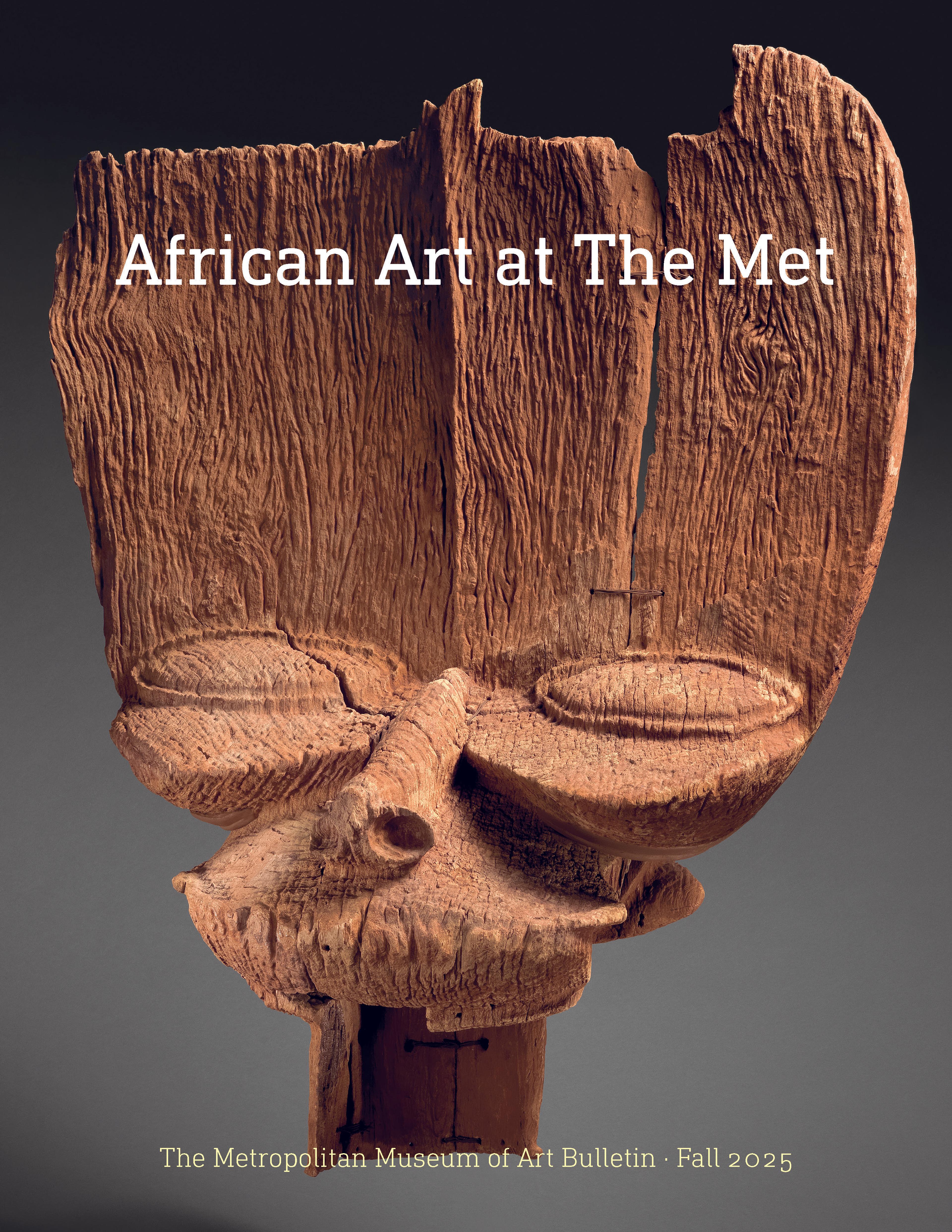Ndoli jowei mask
This helmet mask evokes idealized feminine beauty and, like other masks of this type known as sowei or ndoli jowei developed in the region, would have been worn by leaders of the all-female society during the initiation of young women into adulthood. Within Mende and Sherbro culture in Sierra Leone, or Bassa and Vai cultures from neighboring Liberia, helmet masks are carved with symbolic features that endow wearers with spiritual power. Senior members of the Sande initiation society may have worn this work in performances.
As a representation of the guardian spirit of Sande—a powerful pan-ethnic women's association responsible for education and moral development—the work alludes to an idealized female beauty. Worn at performances to celebrate the completion of the young initiates' training period, these masks are finely carved to convey admired feminine features: an elaborate coiffure, a smooth broad forehead, narrowly slit eyes, a small composed mouth, and a sensuously ringed neck. The latter feature has also been interpreted as suggesting the ripples on the surface of the water as the Sande spirit emerges during initiation rites. The late William Siegmann, who previously owned this helmet mask, did extensive research on forms of masquerades in Sierra Leone and Liberia. In his notes on another ndoli jowei mask now in the collection of the National Museum of African Art, he underlined the importance of snake depictions in Sande ritual practices or beliefs.
As a representation of the guardian spirit of Sande—a powerful pan-ethnic women's association responsible for education and moral development—the work alludes to an idealized female beauty. Worn at performances to celebrate the completion of the young initiates' training period, these masks are finely carved to convey admired feminine features: an elaborate coiffure, a smooth broad forehead, narrowly slit eyes, a small composed mouth, and a sensuously ringed neck. The latter feature has also been interpreted as suggesting the ripples on the surface of the water as the Sande spirit emerges during initiation rites. The late William Siegmann, who previously owned this helmet mask, did extensive research on forms of masquerades in Sierra Leone and Liberia. In his notes on another ndoli jowei mask now in the collection of the National Museum of African Art, he underlined the importance of snake depictions in Sande ritual practices or beliefs.
Artwork Details
- Title: Ndoli jowei mask
- Artist: Bassa artist
- Date: Late 19th–early 20th century
- Geography: western Liberia
- Culture: Bassa peoples
- Medium: Bombax wood
- Dimensions: H. 16 3/4 × W. 9 5/8 × D. 8 7/8 in. (42.5 × 24.5 × 22.5 cm)
- Classification: Wood-Sculpture
- Credit Line: Gift of Javier Peres Politis and Benoît Wolfrom, in celebration of the Museum's 150th Anniversary, 2019
- Object Number: 2019.477.6
- Curatorial Department: The Michael C. Rockefeller Wing
More Artwork
Research Resources
The Met provides unparalleled resources for research and welcomes an international community of students and scholars. The Met's Open Access API is where creators and researchers can connect to the The Met collection. Open Access data and public domain images are available for unrestricted commercial and noncommercial use without permission or fee.
To request images under copyright and other restrictions, please use this Image Request form.
Feedback
We continue to research and examine historical and cultural context for objects in The Met collection. If you have comments or questions about this object record, please contact us using the form below. The Museum looks forward to receiving your comments.
